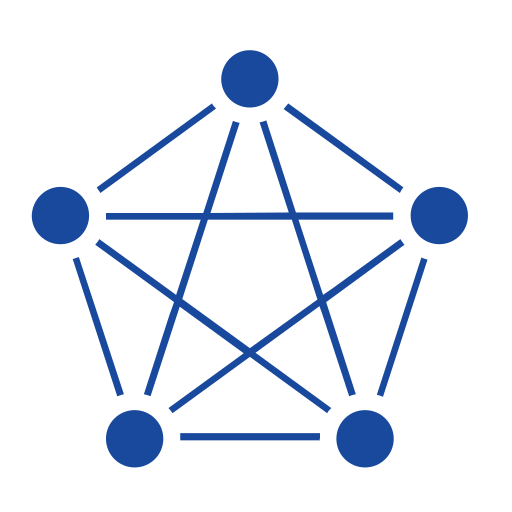Apache Cassandra vs TDengine
A detailed comparison
Compare Apache Cassandra and TDengine for time series and OLAP workloads
Learn About Time Series DatabasesChoosing the right database is a critical choice when building any software application. All databases have different strengths and weaknesses when it comes to performance, so deciding which database has the most benefits and the most minor downsides for your specific use case and data model is an important decision. Below you will find an overview of the key concepts, architecture, features, use cases, and pricing models of Apache Cassandra and TDengine so you can quickly see how they compare against each other.
The primary purpose of this article is to compare how Apache Cassandra and TDengine perform for workloads involving time series data, not for all possible use cases. Time series data typically presents a unique challenge in terms of database performance. This is due to the high volume of data being written and the query patterns to access that data. This article doesn’t intend to make the case for which database is better; it simply provides an overview of each database so you can make an informed decision.
Apache Cassandra vs TDengine Breakdown
 |
 |
|
| Database Model | Distributed wide-column database |
Time series database |
| Architecture | Apache Cassandra follows a masterless, peer-to-peer architecture, where each node in the cluster is functionally the same and communicates with other nodes using a gossip protocol. Data is distributed across nodes in the cluster using consistent hashing, and Cassandra supports tunable consistency levels for read and write operations. It can be deployed on-premises, in the cloud, or as a managed service |
TDengine can be deployed on-premises, in the cloud, or as a hybrid solution, allowing flexibility in deployment and management. |
| License | Apache 2.0 |
AGPL 3.0 |
| Use Cases | High write throughput applications, time series data, messaging systems, recommendation engines, IoT |
IoT data storage, industrial monitoring, smart energy, smart home, monitoring and observability |
| Scalability | Horizontally scalable with support for data partitioning, replication, and linear scalability as nodes are added |
Horizontally scalable with clustering and built-in load balancing. TDengine also provides decoupled compute and storage as well as object storage support for data tiering in some versions |
Looking for the most efficient way to get started?
Whether you are looking for cost savings, lower management overhead, or open source, InfluxDB can help.
Apache Cassandra Overview
Apache Cassandra is a highly scalable, distributed, and decentralized NoSQL database designed to handle large amounts of data across many commodity servers. Originally created by Facebook, Cassandra is now an Apache Software Foundation project. Its primary focus is on providing high availability, fault tolerance, and linear scalability, making it a popular choice for applications with demanding workloads and low-latency requirements.
TDengine Overview
TDengine is a high-performance, open source time series database designed to handle massive amounts of time series data efficiently. It was created by TAOS Data in 2017 and is specifically designed for Internet of Things (IoT), Industrial IoT, and IT infrastructure monitoring use cases. TDengine has a unique hybrid architecture that combines the advantages of both relational and NoSQL databases, providing high performance, easy-to-use SQL for querying, and flexible data modeling capabilities.
Apache Cassandra for Time Series Data
Cassandra can be used for handling time series data due to its distributed architecture and support for time-based partitioning. Time series data can be efficiently stored and retrieved using partition keys based on time ranges, ensuring quick access to data points.
TDengine for Time Series Data
TDengine is designed from the ground up as a time series database, so it will be a good fit for most use cases that heavily involve storing and analyzing time series data.
Apache Cassandra Key Concepts
- Column Family: Similar to a table in a relational database, a column family is a collection of rows, each consisting of a key-value pair.
- Partition Key: A unique identifier used to distribute data across multiple nodes in the cluster, ensuring even distribution and fast data retrieval.
- Replication Factor: The number of copies of data stored across different nodes in the cluster to provide fault tolerance and high availability.
- Consistency Level: A configurable parameter that determines the trade-off between read/write performance and data consistency across the cluster.
TDengine Key Concepts
- Super Table: A template for creating multiple tables with the same schema. It’s similar to the concept of table inheritance in some other databases.
- Sub Table: A table created based on a Super Table, inheriting its schema. Sub Tables can have additional tags for categorization and querying purposes.
- Tag: A metadata attribute used to categorize and filter Sub Tables in a Super Table. Tags are indexed and optimized for efficient querying.
Apache Cassandra Architecture
Cassandra uses a masterless, peer-to-peer architecture, in which all nodes are equal, and there is no single point of failure. This design ensures high availability and fault tolerance. Cassandra’s data model is a hybrid between a key-value and column-oriented system, where data is partitioned across nodes based on partition keys and stored in column families. Cassandra supports tunable consistency, allowing users to adjust the balance between data consistency and performance based on their specific needs.
TDengine Architecture
TDengine uses a cloud native architecture that combines the advantages of relational databases (support for SQL querying) and NoSQL databases (scalability and flexibility).
Free Time-Series Database Guide
Get a comprehensive review of alternatives and critical requirements for selecting yours.
Apache Cassandra Features
Linear Scalability
Cassandra can scale horizontally, adding nodes to the cluster to accommodate growing workloads and maintain consistent performance.
High Availability
With no single point of failure and support for data replication, Cassandra ensures data is always accessible, even in the event of node failures.
Tunable Consistency
Users can balance between data consistency and performance by adjusting consistency levels based on their application’s requirements.
TDengine Features
Data ingestion
TDengine supports high-speed data ingestion, with the ability to handle millions of data points per second. It supports batch and individual data insertion.
Data querying
TDengine provides ANSI SQL support with additional that allows users to easily query time series data using familiar SQL syntax. It supports various aggregation functions, filtering, and joins.
Data retention and compression
TDengine automatically compresses data to save storage space and provides data retention policies to automatically delete old data.
Apache Cassandra Use Cases
Messaging and Social Media Platforms
Cassandra’s high availability and low-latency make it suitable for messaging and social media applications that require fast, consistent access to user data.
IoT and Distributed Systems
With its ability to handle large amounts of data across distributed nodes, Cassandra is an excellent choice for IoT applications and other distributed systems that generate massive data streams.
E-commerce
Cassandra is a good fit for E-commerce use cases because it has the ability to support things like real-time inventory status and it’s architecture also allows for reduced latency by allowing region specific data to be closer to users.
TDengine Use Cases
IoT data storage and analysis
TDengine is designed to handle massive amounts of time series data generated by IoT devices. Its high-performance ingestion, querying, and storage capabilities make it a suitable choice for IoT data storage and analysis.
Industrial IoT monitoring
TDengine can be used to store and analyze data from industrial IoT sensors and devices, helping organizations monitor equipment performance, detect anomalies, and optimize operations.
Infrastructure Monitoring
TDengine can be used to collect and analyze time series data from IT infrastructure components, such as servers, networks, and applications, facilitating real-time monitoring, alerting, and performance optimization.
Apache Cassandra Pricing Model
Apache Cassandra is an open-source project, and there are no licensing fees associated with its use. However, costs can arise from hardware, hosting, and operational expenses when deploying a self-managed Cassandra cluster. Additionally, several managed Cassandra services, such as DataStax Astra and Amazon Keyspaces, offer different pricing models based on factors like data storage, request throughput, and support.
TDengine Pricing Model
TDengine is open source and free to use under the AGPLv3 license. TDengine also offers commercial licenses and enterprise support options for organizations that require additional features, support, or compliance with specific licensing requirements.
Get started with InfluxDB for free
InfluxDB Cloud is the fastest way to start storing and analyzing your time series data.
